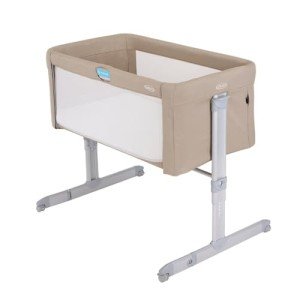15 Gifts For The Bedside Bassinet Lover In Your Life
The Ultimate Guide to Choosing a Bedside Bassinet: Safety, Comfort, and Convenience
Introduction
As new parents step into the exciting yet overwhelming world of childcare, one necessary item that frequently tops the list is a bedside bassinet. These spaces work as a safe sleeping location for newborns while allowing parents to maintain close proximity during the night. With a myriad of options readily available on the market today, comprehending the features, benefits, and factors to consider for a bedside bassinet can make a significant distinction in the overall parenting experience.
This short article will explore the different types of bedside bassinets, security standards, crucial functions to consider, and some regularly asked concerns to assist you make an informed decision.
What is a Bedside Bassinet?
A bedside bassinet is a sleeping space developed for newborns and infants, generally utilized for the first few months of a baby's life. It is normally smaller than a crib and uses the benefit of being positioned beside an adult bed, making it possible for parents to tend to their babies quickly during nighttime.
Types of Bedside Bassinets
There are a number of types of bedside bassinets offered, each designed with unique functions and advantages:
Co-Sleeping Bassinets: These are created to attach firmly to the side of the moms and dad's bed, permitting easy access throughout nighttime feedings and reassuring without totally co-sleeping.
Standalone Bassinets: These are free-standing variations that sit next to your bed however do not attach. While they take up more space, they can often offer a bigger sleeping location.
Travel Bassinets: Lightweight and portable, these bassinets are designed for families on the go. They can be folded or dismantled quickly, using convenience while taking a trip.
Convertible Bassinets: Some models can transform into cribs or playards, extending their life-span and making them a more affordable choice.
Advantages of Using a Bedside Bassinet
Going with a bedside bassinet can give various advantages, including:
Convenience: Parents can quickly access their baby throughout the night for feeding, reassuring, or diaper modifications without getting out of bed.
Safety: Bassinets are designed particularly for infants, typically sticking to security guidelines that help reduce the danger of Sudden Infant Death Syndrome (SIDS).
Comfort: Babies can feel protected with their parents nearby, promoting a sense of security that is favorable to better sleep.
Space-saving: Bedside bassinets are typically compact and easy to suit smaller sized bedrooms.
Key Safety Features to Consider
When picking a bedside bassinet, guaranteeing security is paramount. Here are a few vital security functions to consider:
Stable Base: Ensure the bassinet has a tough structure that can not tip over easily. Examine that wheels lock into location to prevent motion.
Breathable Fabrics: Look for materials that permit air blood circulation to decrease the risk of suffocation.
Height Adjustability: A bassinette that adapts to the height of your bed can enhance safety and benefit.
No Drop Sides: Select designs that do not have drop sides, as they can pose a risk of the baby falling out or getting caught.
Certification: Always make sure that the bassinet abides by security standards set by recognized firms like the American Academy of Pediatrics (AAP).
Additional Features to Look For
Aside from safety, here are some extra functions to consider when searching for the right bedside bassinet:
Storage Space: Some bassinets come with built-in storage for basics like diapers, wipes, and attire.
Rocking or Gliding Mechanism: This can assist relieve babies who have problem calming down to sleep.
Noise and Light Features: Some models include calming sounds, nightlights, or forecasts that can assist relieve infants to sleep.
Washable Components: Make sure removable covers and sheets are device washable for easy cleansing.
Picking the right bedside bassinet is a crucial decision that can exceptionally affect the early parenting experience. By understanding the different types available, their advantages, vital security features, and additional conveniences, parents can make an informed choice to make sure both their baby's convenience and security.
Eventually, the right bedside bassinet must accommodate private household requires while improving the bond between parents and their newborns throughout those precious very first few months.
Frequently Asked Questions about Bedside Bassinets
1. The length of time can I use a bedside bassinet for my baby?
Many bassinets are designed for infants as much as about 4 to 6 months, or till the baby can roll over, bring up, or surpass the weight limit defined by the maker (normally around 20-30 pounds).
2. Are bedside bassinets safe for co-sleeping?
While bedside bassinets use close proximity, it's crucial to ensure they're firmly connected to the bed. Constantly follow guidelines for safe sleeping to reduce the danger of SIDS.
3. Can I use a bedside bassinet for a premature baby?
Yes, numerous bedside bassinets can accommodate early infants. However, official source to seek advice from a pediatrician for suggestions based on your baby's specific requirements.
4. What should I search for in regards to bed mattress safety in a bedside bassinet?
Make sure that the mattress fits firmly versus the sides of the bassinet without any gaps. The mattress needs to be firm and covered with a fitted sheet to reduce the threat of suffocation.
5. Exist any particular cleansing guidelines I should follow?
Most bassinets have removable covers that can be cleaned. Always follow the maker's instructions for cleansing and maintaining the bassinet.
By dealing with these questions, parents can navigate the decision-making process relating to bedside bassinets more effectively, guaranteeing safety and convenience as they welcome their little one into the world.
